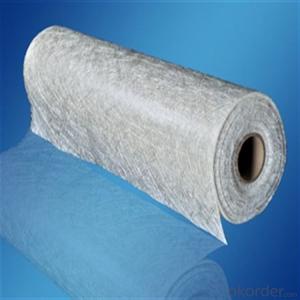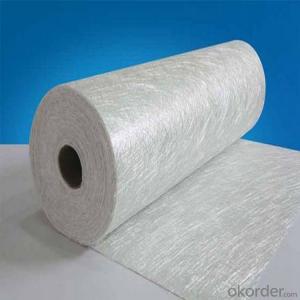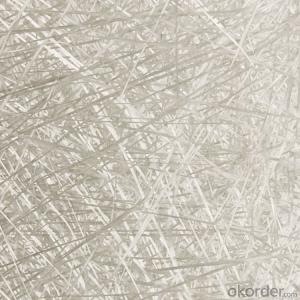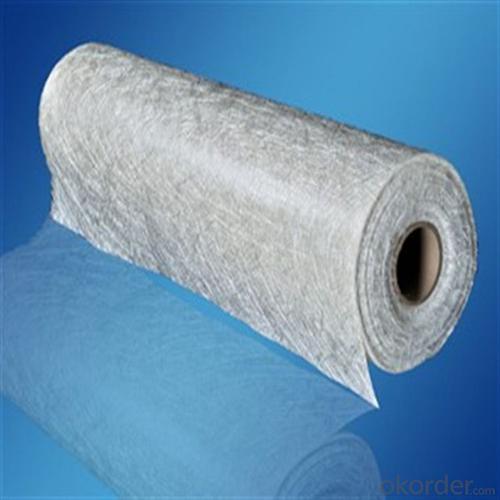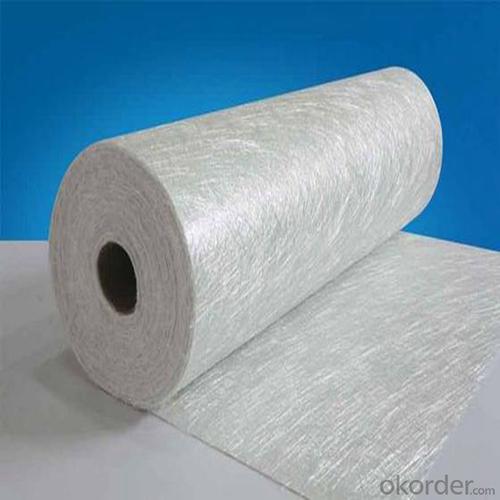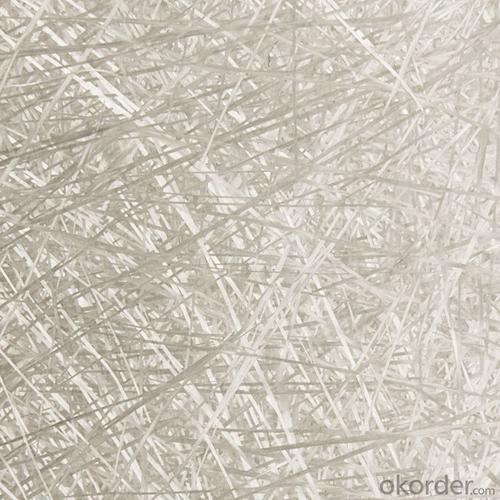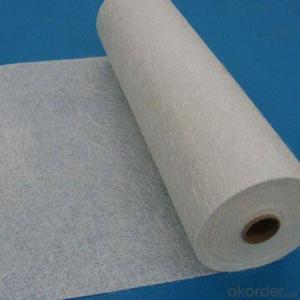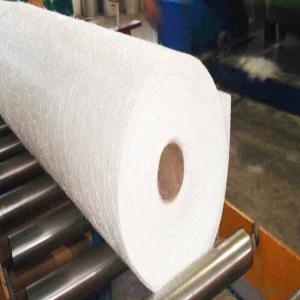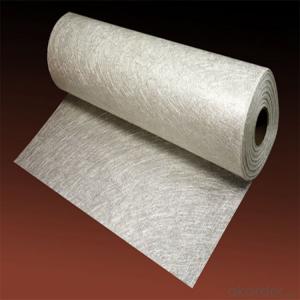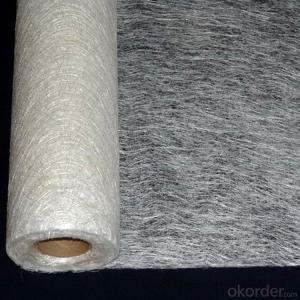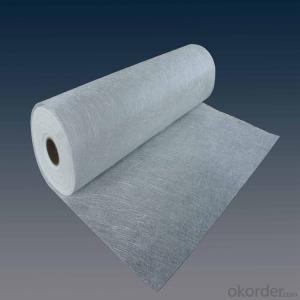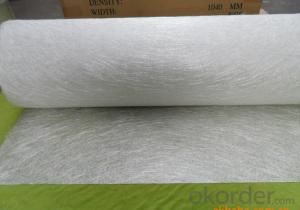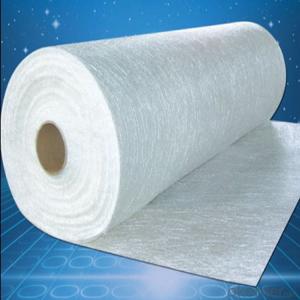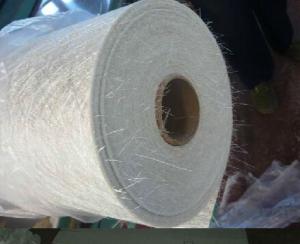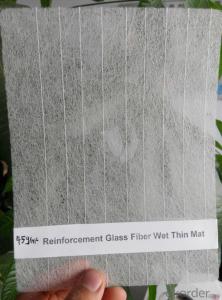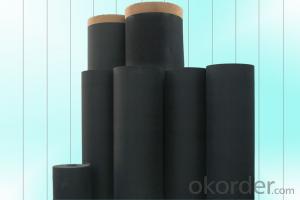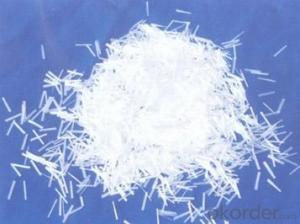Fiberglass Emulsion Chop Strand Mat/Fiberglass CSM/Fiberglass Mat
- Loading Port:
- China main port
- Payment Terms:
- TT OR LC
- Min Order Qty:
- 1 kg
- Supply Capability:
- 10000 kg/month
OKorder Service Pledge
OKorder Financial Service
You Might Also Like
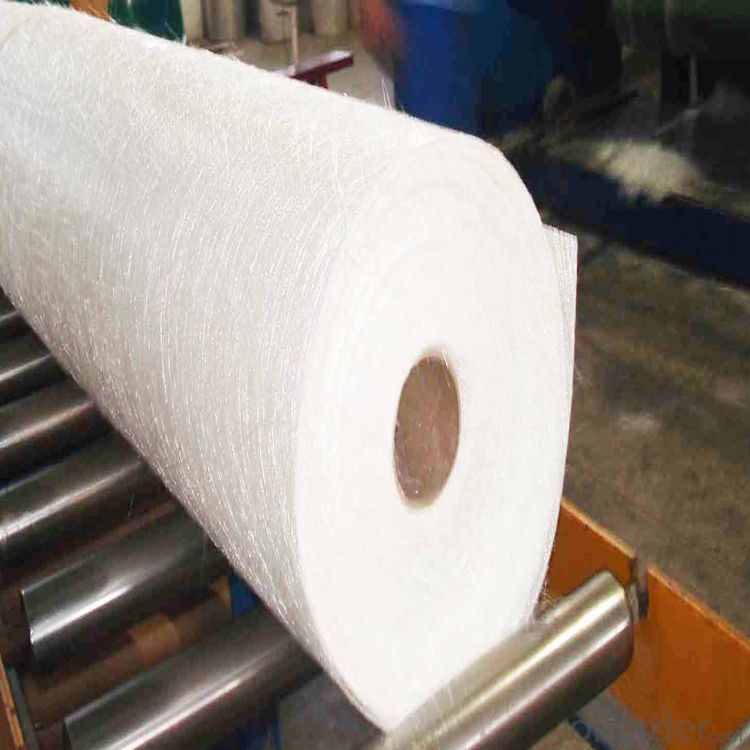
Product Description:
Fiberglass Chopped Strand Mat is fine strand reinforcement material made from E-glass cut fibers laid in a random pattern and bonded with powder or emulsion binder.
It is easy to handle and has excellent moulding performance.
Also, it has rapid resin penetration together with a fast strand wet out time.
The mat also brings a highly translucent finished laminates.
Also,the fine strand input makes the fiber prominence at the finished laminates surface extremely low.
Features
1.Excellent weight uniformity
2.Fast wet out
3.Easy air release
4.Excellent transparency of finished products
5.Excellent laminate
6.Low resin consumption
Application
1.Translucent roof panel
2.chemical storage tanks
3.FRP pipes
4.Boat hulls
5.Decks
6.Truck body panel
7.Cooling towers
8.Corrosion resistand
Specifications:
Item | Over Density | Moisture Content | Chop Density | Polyester Yarn | Width |
(g/m2) | (%) | (g/m2) | (g/m2) | (mm) | |
EMK300 | 309.5 | ≤0.15 | 300 | 9.5 | 50-3300 |
EMK380 | 399 | 380 | 19 | ||
EMK450 | 459.5 | 450 | 9.5 | ||
EMK450 | 469 | 450 | 19 | ||
EMC0020 | 620.9 | 601.9 | 19 | ||
EMC0030 | 909.5 | 900 | 9.5 |
Special products are available according to customer’s requirement.
Product Packaging:
Each Surface Tissue is wound onto a paper tube which has an inside diameter of 76mm and the mat roll has a diameter of 330mm. The mat roll is wrapped up with plastic film,and then packed in a cardboard box or wrapped up with kraft paper. The rolls can be vertically or horizontally placed. For transportation, the rolls can be loaded into a cantainer directly or on pallets.
Quantity
20'GP Container:About 10000kgs
40'HP Container:Aboout 23100kgs
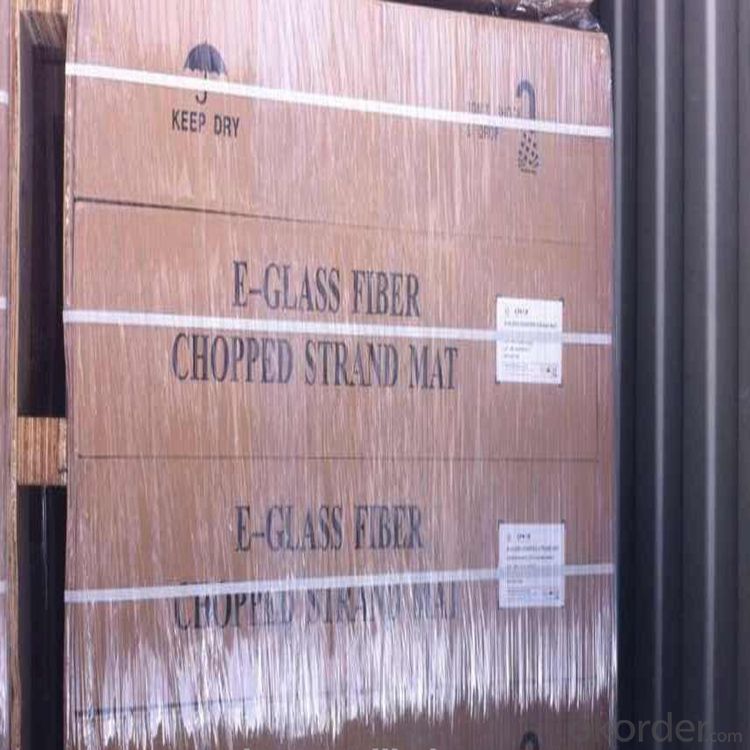
Product Storage:
Unless otherwise specified, Chopped Strand Mat should be stored in a dry, cool and rain-proof area. It is recommended that the room temperature and humidity should be always maintained at 15℃~35℃ and 50%~75% respectively.
Company Information
CNBM (China National Building Material) Group is the largest comprehensive building materials group in China that in integrate scientific research, manufacturing and logistics into one entity. The largest building materials and equipment specialists in China. Upon State Council approval, today CNBM owned more than 300 subordinate manufacturing factories and servicing companies. There are 6 fully owned public listed companies and 11 partially owned with substantial shares public listed companies. In many of these fields, CNBM is playing the leading role in the building industry in the country.
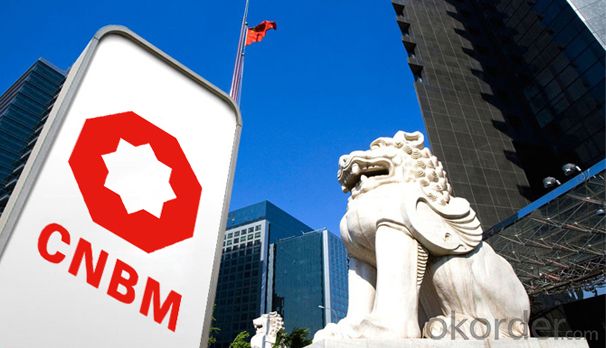
Our Service:
1.Any inquiry will be replied within 24 hours.
2.Professional manufacturer.
1) Print logo in the products;
2) The size and specification can be produce and design according to your demand.
3.High quality,fashion designs,reasonable and competitive price,fast lead time.
4.After-sale service
1) All products will have been strictly quality check in house before packing.
2) All products will be well packed before shipping.
3) All our products have 10 years rot resistance.
5.Faster delivery:sample order in stock,and 15-20 days for bulk production.
6.Payment:you can pay for the order via:T/T,Western Union,MoneyGram,L/C etc.
FAQ:
which kind of glass fiber sample and materials can you provide?
We can provide the glass fiber and glass fiber down stream products samples of E glass, C glass, ECR glass, High alkali glass. The products includes single end roving, assembled roving for different applications( Piping, SMC, panel, winding mill plate) , chop strand for BMC, engineering plastic (PA, PPA, PPT, POM, etc), chop strand mat (from 100gsm-900gsm) for automobile and water tank, etc, woven roving (270gsm-800gsm), surface tissue (25-50gsm), multi-axial fabric of different unit weight.
- Q: How is fiberglass chopped strand used in the consumer goods industry?
- Fiberglass chopped strand is commonly used in the consumer goods industry due to its versatility and strength. It is often incorporated into various products such as automobiles, sporting goods, furniture, and appliances. The chopped strands are mixed with resins or polymers to create a reinforced composite material, enhancing the product's durability, stiffness, and impact resistance. This allows for the production of lightweight yet robust consumer goods that can withstand daily wear and tear, making them more reliable and long-lasting.
- Q: Can fiberglass chopped strand be used in automotive interior components?
- Yes, fiberglass chopped strand can be used in automotive interior components. Fiberglass chopped strand is a versatile material that offers several advantages for automotive applications. It is lightweight, which helps to reduce overall vehicle weight and improve fuel efficiency. Additionally, fiberglass chopped strand has excellent strength and stiffness properties, making it suitable for use in structural components such as seat frames, door panels, and dashboard supports. Furthermore, fiberglass chopped strand can be easily molded into complex shapes, allowing for the creation of intricate interior designs and features. It also has good resistance to chemicals, heat, and UV radiation, ensuring durability and longevity in automotive environments. Moreover, fiberglass chopped strand can be combined with other materials, such as resins, to enhance its performance characteristics. This allows for customization and optimization of the material properties to meet specific requirements in automotive interior components. Overall, fiberglass chopped strand is a viable choice for automotive interior components due to its lightweight, strength, moldability, and durability properties.
- Q: What is the melting point of fiberglass chopped strand?
- The melting point of fiberglass chopped strand typically ranges from 1,100 to 1,400 degrees Celsius (2,012 to 2,552 degrees Fahrenheit).
- Q: Is fiberglass chopped strand easy to handle and process?
- Fiberglass chopped strand is generally acknowledged as being easy to handle and process. It consists of small, short fibers that are cut to a specified length, typically around 1-3 inches. These fibers are usually mixed with a binder or resin and used in various applications, including reinforced plastics, composites, and insulation. The versatility and ease of use are among the main advantages of fiberglass chopped strand. The short length of the fibers makes them simpler to handle compared to longer continuous fibers. They can be easily mixed with resins or binders and then molded or formed into desired shapes. The chopped strands can also be easily dispersed into a matrix material, ensuring even distribution of the reinforcement throughout the product. Moreover, fiberglass chopped strand offers excellent wet-out properties, which means it can easily absorb and bond with resins or other matrix materials. This guarantees proper adhesion and strength in the final product. In addition to its ease of handling and processing, fiberglass chopped strand has several other benefits. It is lightweight, strong, and corrosion-resistant, making it an ideal choice for various applications. It also provides effective thermal and electrical insulation properties. All in all, fiberglass chopped strand is a convenient and efficient material to work with. Its ease of handling and processing, combined with its desirable properties, have made it a popular choice in industries such as automotive, construction, and aerospace.
- Q: Can fiberglass chopped strand be used in the production of wind turbine towers?
- Yes, fiberglass chopped strand can be used in the production of wind turbine towers. It is commonly used as a reinforcement material in the manufacturing of composite structures, providing strength, durability, and corrosion resistance. The fiberglass chopped strand is typically mixed with a resin matrix to form composite panels or laminates, which are then used to construct the wind turbine towers.
- Q: How does the fiber dispersion of fiberglass chopped strand affect the quality of composites?
- The fiber dispersion of fiberglass chopped strand plays a significant role in determining the quality of composites. Fiber dispersion refers to the uniform distribution of fibers within a composite material. It affects several key properties of the final product, including mechanical strength, durability, and overall performance. A well-dispersed chopped strand ensures that the fibers are evenly distributed throughout the composite matrix. This uniform distribution enhances the load-bearing capacity and stiffness of the material. It prevents areas of weak fiber concentration, which could otherwise lead to localized stress concentration and potential failure points. In other words, a high fiber dispersion fosters a more homogeneous and isotropic composite structure, resulting in improved mechanical properties. Additionally, fiber dispersion affects the interfacial adhesion between the fibers and the matrix. When fibers are well-dispersed, there is an increased contact area between the fibers and the matrix material. This enhanced interfacial bonding improves the transfer of load between the two phases and enhances the overall strength and toughness of the composite. It also reduces the likelihood of fiber pull-out or matrix cracking, which can weaken the material. Moreover, fiber dispersion influences the resistance of composites to various forms of degradation, such as moisture absorption, chemical attack, and thermal cycling. A uniform distribution of fibers creates a continuous reinforcement network that provides better resistance to these external factors. It minimizes the potential for voids or gaps between fibers, which can act as initiation sites for damage. In summary, the fiber dispersion of fiberglass chopped strand has a direct impact on the quality of composites. It affects mechanical properties, interfacial adhesion, and resistance to degradation. Therefore, manufacturers must pay close attention to achieve proper fiber dispersion during the manufacturing process to produce high-quality composites with improved performance and durability.
- Q: Can fiberglass chopped strand be used in the production of agricultural equipment?
- Yes, fiberglass chopped strand can be used in the production of agricultural equipment. Fiberglass is a versatile material that offers several advantageous properties for agricultural applications. It is lightweight, strong, and durable, which makes it suitable for use in equipment such as tractor hoods, fenders, and panels. Fiberglass also has excellent corrosion resistance, which is important in the agricultural industry where equipment is exposed to various weather conditions and chemicals. Additionally, fiberglass can be molded into complex shapes, allowing for the customization of agricultural equipment according to specific requirements. Overall, using fiberglass chopped strand in the production of agricultural equipment can enhance its performance, longevity, and reliability.
- Q: Is fiberglass chopped strand suitable for the production of roofing materials?
- Indeed, fiberglass chopped strand is well-suited for manufacturing roofing materials. As a reinforcement material, fiberglass chopped strand finds widespread application in the production of diverse products, including roofing materials. It boasts exceptional strength and durability, rendering it highly suitable for enduring the harsh weather conditions that roofs encounter. Moreover, its lightweight nature lessens the burden on the roof structure. In addition, it exhibits resistance to corrosion and possesses commendable thermal insulation characteristics. These attributes render it an apt selection for manufacturing roofing materials, guaranteeing roofs that are both enduring and dependable.
- Q: How does fiberglass chopped strand affect the strength of composite materials?
- Fiberglass chopped strand plays a crucial role in enhancing the strength of composite materials. When added to a composite matrix, the chopped strand reinforces the material, increasing its overall strength and stiffness. The fibers in fiberglass chopped strand act as a reinforcement, providing mechanical support and improving the material's resistance to external forces or stresses. The fibers in chopped strand are typically made of glass, which has high tensile strength and stiffness. When embedded in a composite matrix, these fibers distribute stress more evenly throughout the material, preventing the propagation of cracks and enhancing its load-bearing capacity. Additionally, the high aspect ratio of the chopped strand fibers promotes efficient stress transfer from the matrix to the reinforcement, further improving the material's strength. The orientation and distribution of the chopped strand fibers also play a significant role in determining the strength of the composite material. By adjusting the fiber alignment and dispersion, manufacturers can tailor the material to meet specific mechanical requirements. For instance, aligning the fibers in a unidirectional manner can significantly increase the material's strength along a particular direction, making it suitable for applications requiring high tensile or flexural strength. In summary, fiberglass chopped strand greatly influences the strength of composite materials. By reinforcing the composite matrix, the chopped strand fibers enhance the material's overall strength, stiffness, and load-bearing capacity. The properties of fiberglass chopped strand, including its high tensile strength, stiffness, and aspect ratio, contribute to the improved mechanical performance of composite materials.
- Q: Can fiberglass chopped strand be used in the production of boat hulls?
- Yes, fiberglass chopped strand can be used in the production of boat hulls. Fiberglass chopped strand is a type of reinforcement material that is commonly used in composite materials, including boat hulls. It is made up of small fibers of glass that are randomly chopped into short lengths and then mixed with a resin to create a strong and durable composite material. When used in boat hull production, fiberglass chopped strand helps to provide strength, stiffness, and impact resistance to the hull, making it suitable for withstanding the harsh conditions of marine environments. Additionally, fiberglass chopped strand can be easily molded into complex shapes, allowing boat manufacturers to create hulls with specific designs and features. Overall, fiberglass chopped strand is a commonly used and effective material in the production of boat hulls.
Send your message to us
Fiberglass Emulsion Chop Strand Mat/Fiberglass CSM/Fiberglass Mat
- Loading Port:
- China main port
- Payment Terms:
- TT OR LC
- Min Order Qty:
- 1 kg
- Supply Capability:
- 10000 kg/month
OKorder Service Pledge
OKorder Financial Service
Similar products
Hot products
Hot Searches
Related keywords
